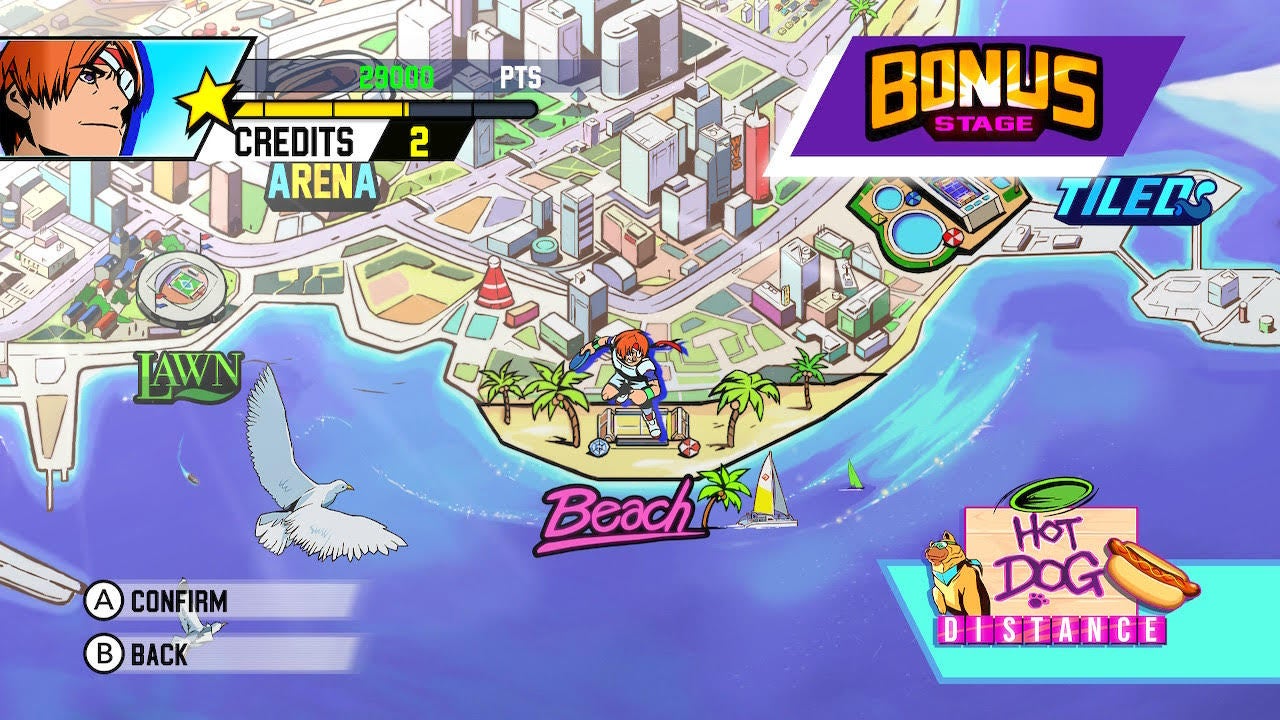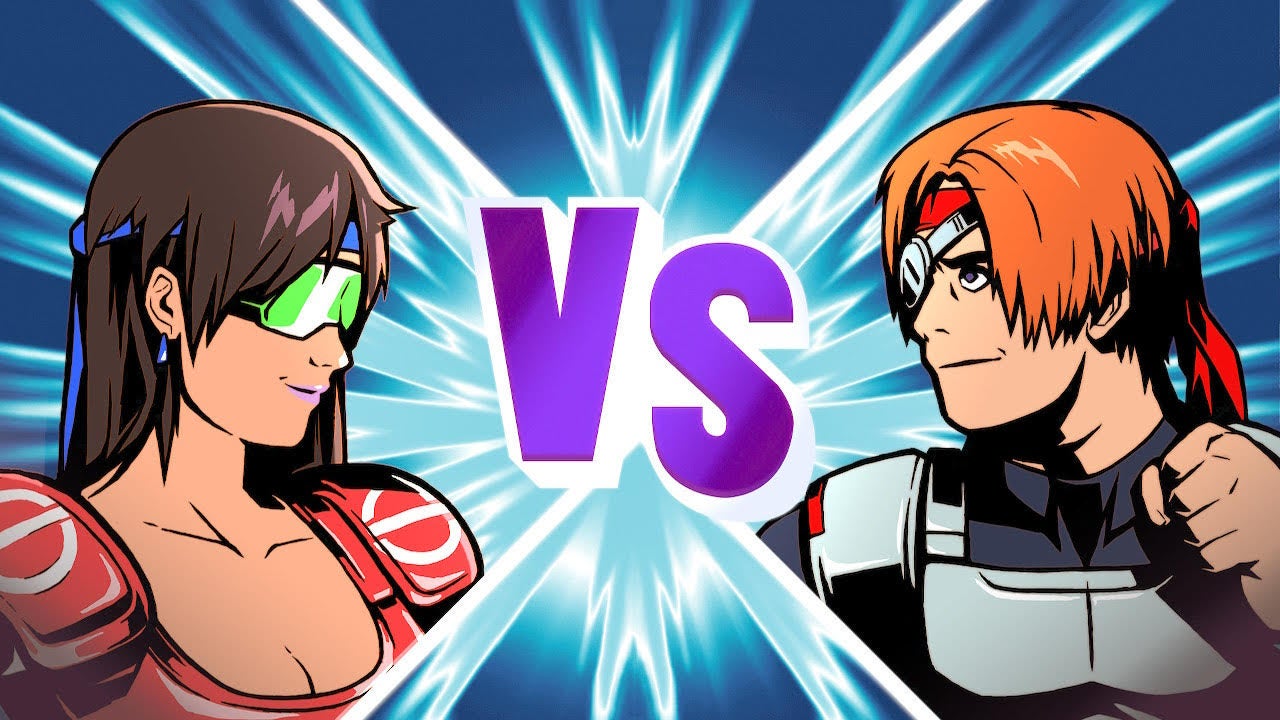Firstly, though, it’s worth briefly exploring what made the 1994 original so beloved, as that’s the firm foundation for this fantastic follow-up. Coming just as the 3D graphics revolution was pushing the Neo Geo’s brand of muscular 2D action out of the limelight, Windjammers has always felt like the apex of that particular artform. The bold pinks and yellows of its graphics combined with the wraparound chrome shades of its athletes give it the mid-90s tang of a lunch of cheesestrings washed down with Capri-Sun, that aesthetic providing the perfect front for a deliciously immediate hybrid of fighting and sports games. As far as fictional video game sports go, I’ve always ranked Windjammer’s hyper-charged spin on air hockey up there with Speedball 2’s take on handball - there’s the same snappiness and dynamism, only in Windjammers that violence is swapped out for sweet lazy summer vibes. You’re smashing a discus from one player to another, trying to squeeze it past them into one of several zones that offer up points, all while leaning on specials and swerve shots and diving for spectacular saves. It’s Pong meets Street Fighter, in other words, and it’s to Data East’s credit that Windjammers manages to be every bit as entertaining as that combination promises. Small wonder it soon became a cult classic, its popularity only hampered by licensing issues that ensured Windjammers ports were never quite as ubiquitous as they should have been. I’ve an original MVS cart that’s the centrepiece of my own modest Neo Geo collection, the game the first port of call when playing with friends on my cabinet and responsible for many long, brilliant evenings locked in combat, though that’s nothing compared to the dedication shown by the Windjammers competitive scene that flourishes in France. It’s small surprise then that French outfit Dotemu has stepped up for the revival, getting some of the same talent behind its exquisite Streets of Rage 4 - designer Jordi Asensio once again displays a deft and delicate touch - together with some of the original team such as original composer Seichi Hamada for something that’s, first and foremost, utterly faithful. Indeed, this is a more conservative thing than Streets of Rage 4, in part by necessity - the fundamentals are precisely the same, and beneath the glossy new visuals the movement of each character and the arc of the discus exactly the same on an old Astro City as they are playing on an OLED Switch. It reminds me a little of David Sirlin’s Super Street Fighter 2 Turbo HD Remix in that way, an attempt to expand upon an all-time classic - and at first I wasn’t entirely convinced the original needed that much expanding upon one way or another. Put that down to an overattachment to the original, though, as after half a dozen hours my heart softened and the additions - of which there are a generous amount - all began to sit harmoniously alongside the fundamentals of the original. There are some new stages that introduce slightly more fluid scoring zones, some new characters who provide interesting hybrids of the old and returning cast, as well as new moves such as parries and spikes that broaden the possibilities of each play. After a night playing Windjammers 2 online - which is the heart of this offering, served by a slight yet stable feature set with rollback code and ranked and casual play - it’s remarkable how well those new moves complement the originals, making this a markedly more complex beast than its predecessor. With new specials and EX moves added into the mix, one of the few faults I could find with this sequel is its lack of a decent tutorial to take you through how it all fits together but, once it all clicks into place, fit together it most certainly does, only this time presenting a slightly more complex toolkit. Whether you prefer that or not will be a question of taste, though I personally admire how this particular sequel sits alongside the original and offers its own distinctive take. Is it superior to the 1994 original? I don’t think those behind Windjammers 2 will be too disheartened to hear I’m not sure it ever could be, that original aesthetic and those pared-back fundamentals still providing a special offering all of their own. Remarkably, though, this is a sequel that sits proudly alongside the original, offering a subtly different, enjoyably dynamic take that will hopefully earn the series a new legion of fans. Here’s an assured revival of a cult favourite that’s a modern classic in its own right.




